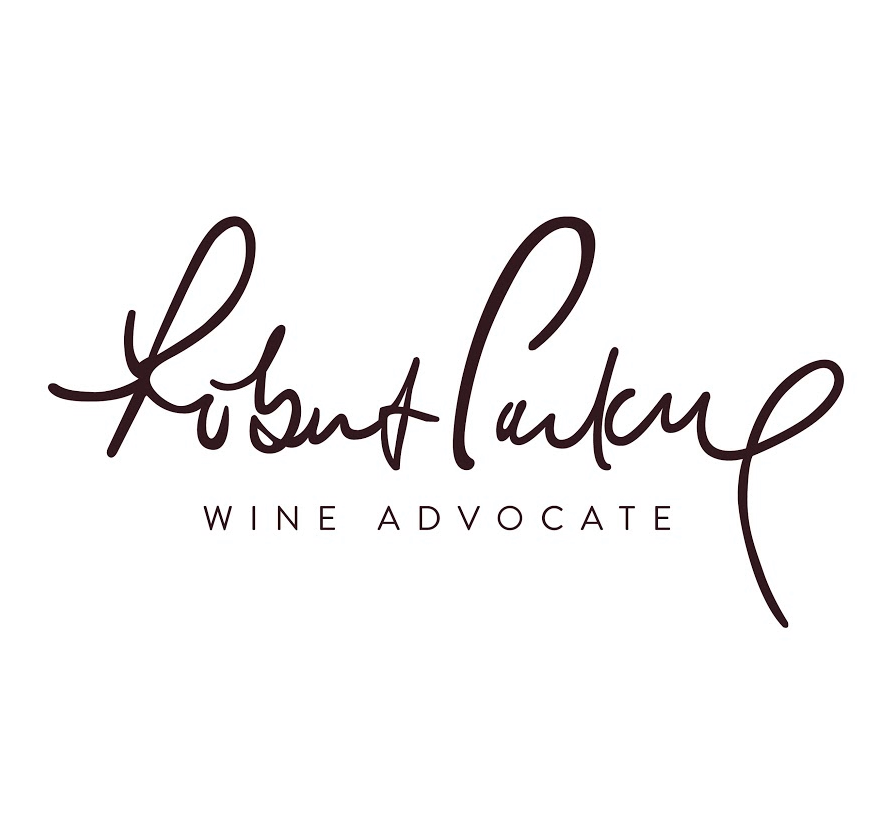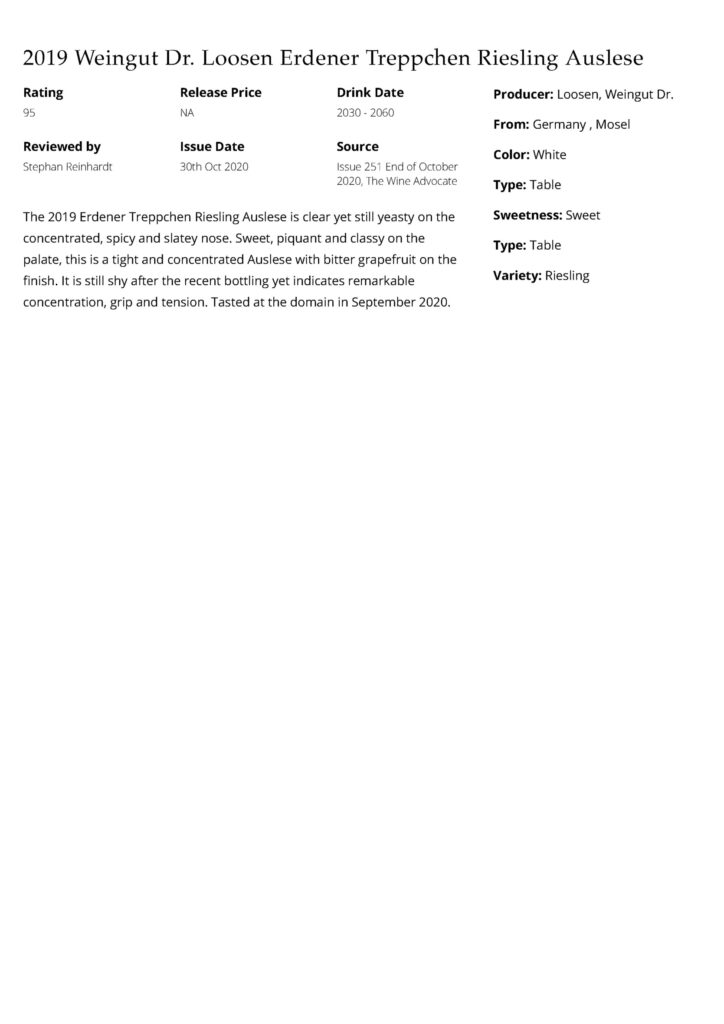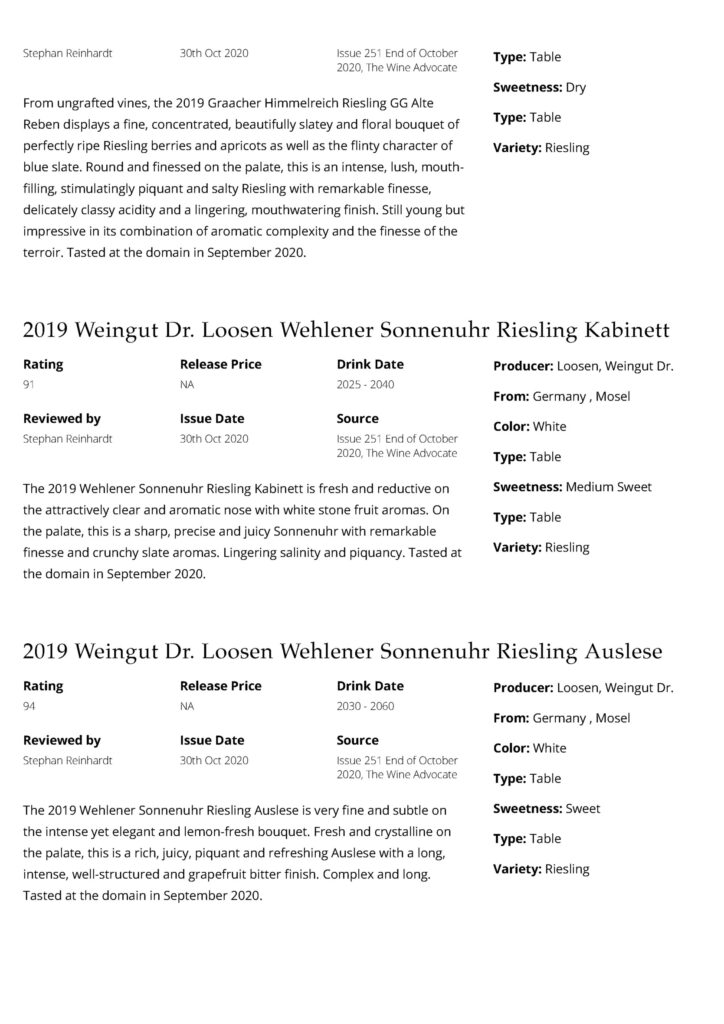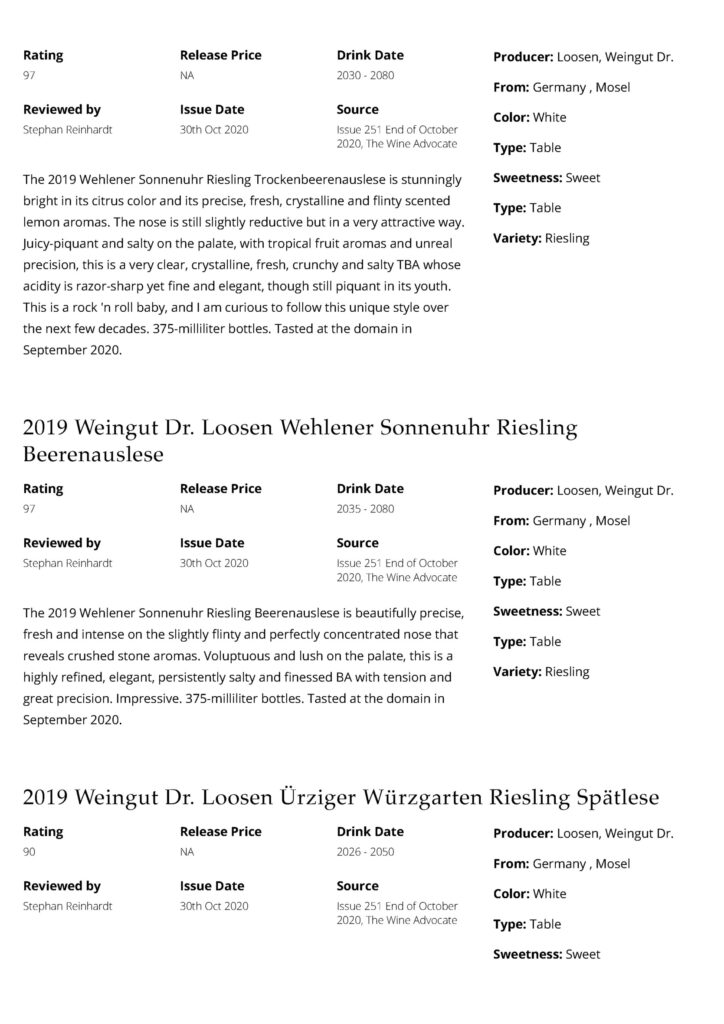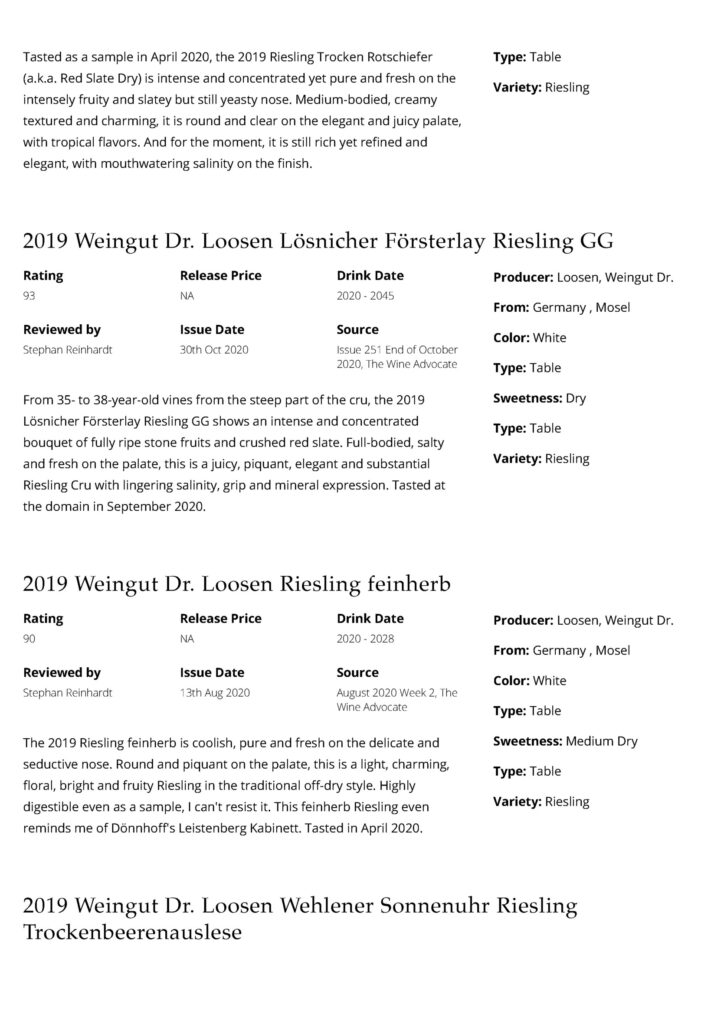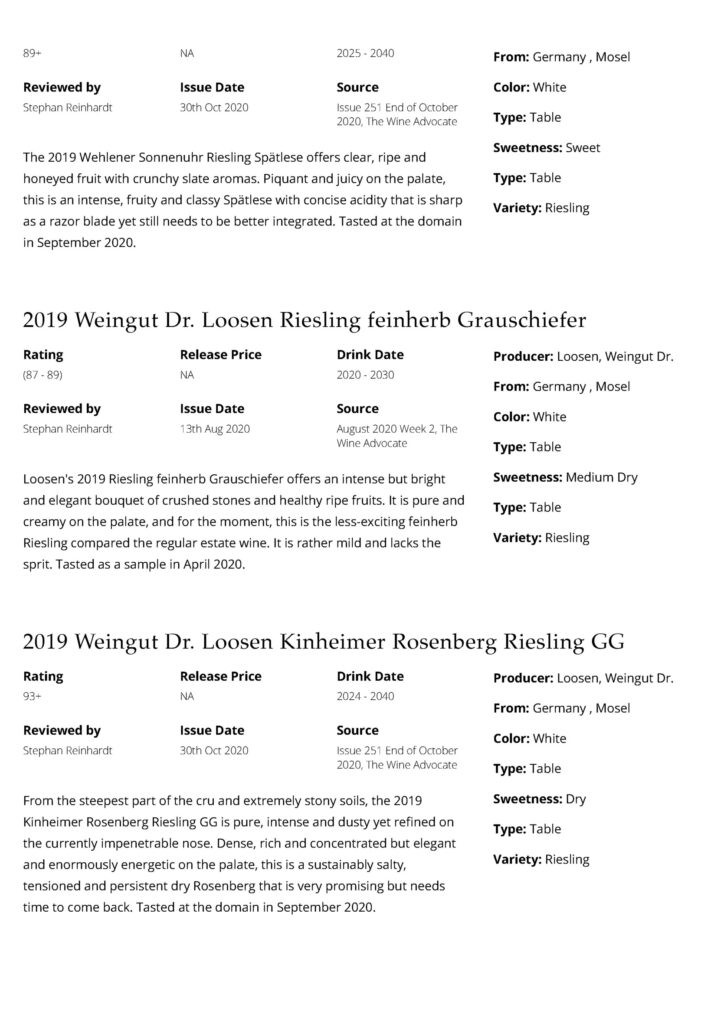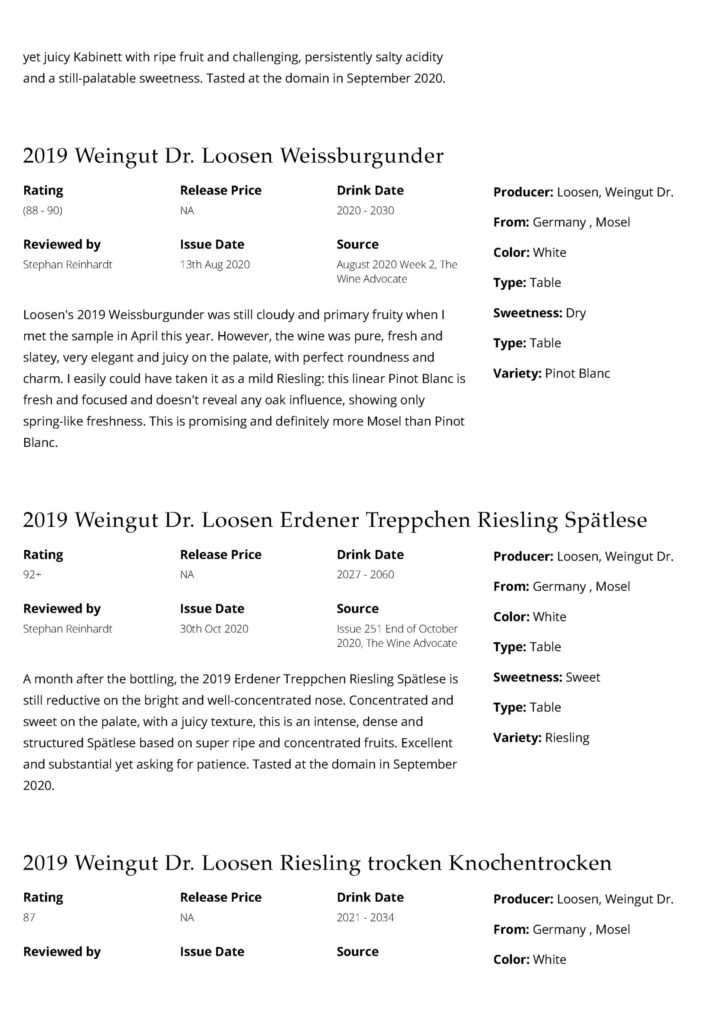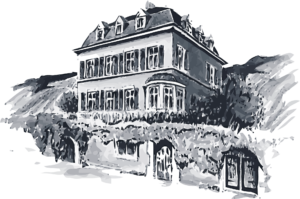„2019 was a great, great year,“ says Ernst Loosen, whom everyone just calls Ernie, although the quantity is small and at 60 hectoliters per hectare, about 23% below the long-term average. „At the end of the harvest, it became ’spongy.‘ There was rain and unattractive, washed out botrytis. Only the early botrytis was beautiful, though.” Nothing but perfect botrytis grapes are used for Loosen’s terrific predicate,s of which the current portfolio has many to offer from 2018 and 2019, even a 2019 Long Gold Capsule from the Erdener Prälat.
The dry Rieslings, on the other hand, are more oriented toward the Wachauer Smaragds, as they were produced at the end of the 1980s, when rarely more than 12.5% alcohol was on the label. „Twelve, maximum 12.5% alcohol fits best with Riesling,“ argues Loosen who even prefers to see his village wines at 11% instead of 12% alcohol. „After that, they become too heavy, too ponderous,“ he says. Loosen describes the acids of the 2019s as „crisp“ (they range between 7.5 and 8 grams per liter), and in fact they give an inimitable breed and precision to the GGs.
The harvest began early with negative pre-selections, so that only healthy grapes remained on the vines. Especially for the Kabinett, Loosen strives for lightness, crisp freshness and piquancy, as is typical for the Wachau Federspiel. „More than 83°, maximum 85° Oechsle should therefore not be allowed for Kabinett grapes, otherwise no real Kabinett can be made from them. But exactly this light and crisp style is most in demand in export markets,“ says Loosen. „So, we have to start early and may only get healthy, clean grapes at 82° Oechsle. Even the Spätlese should not be harvested too ripe and should only be based on healthy grapes so that they are juicy but remain light-footed and are supported by a mineral acidity,“ finds Loosen. Also for the GGs, only healthy but now fully ripe grapes with must weights up to 95° Oechsle are considered. The 2019s were all harvested in the last three weeks of October, in the ungrafted plots of the Wehlener Sonnenuhr, for example, with tiny yields of only six to seven hectoliters per hectare—which expresses a sophisticated form of luxury. Since Loosen owns seven hectares in the Wehlener Sonnenuhr, for example, he is able to reduce the potential acreage down to those 3.5 hectares that are planted with very old, ungrafted vines, of which he picks only the smallest and finest grapes for the grand cru. Other qualities are used for predicate wines or even a village or estate wine.
The higher 2018 and 2019 predicate wines are not only exceptional but also digestible, fruity wines from overripe but also green berries that have never been better here. The berries were shriveled to raisins without noble rot in 2018 yet by perfectly dry botrytis in the early autumn of 2019. „Since we cultivate 10 Grosse Lagen and want to harvest all of them optimally, we are only at the race in autumn—that’s a real challenge!“
Apparently, it is not big enough, though, because this year, 2020, an 11th top vineyard has been added to the cru portfolio, the Bremmer Calmont. Bel Calda is the name of the monopole plot, which gathers on a scarce, extremely steep hectare of ungrafted vines that were planted at the end of World War II. The Calmont is probably the steepest vineyard in Europe and is excellently represented only by the Franzen family so far. We can be look forward to more Calmont wines to come, especially since Loosen has been playing with his GGs in the front row for a couple of years. In other words, this shall be more good stuff from Ernie Loosen.„
